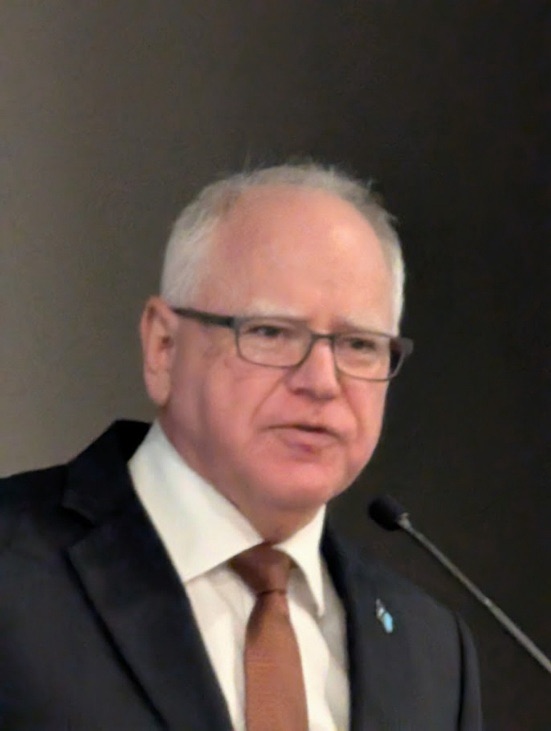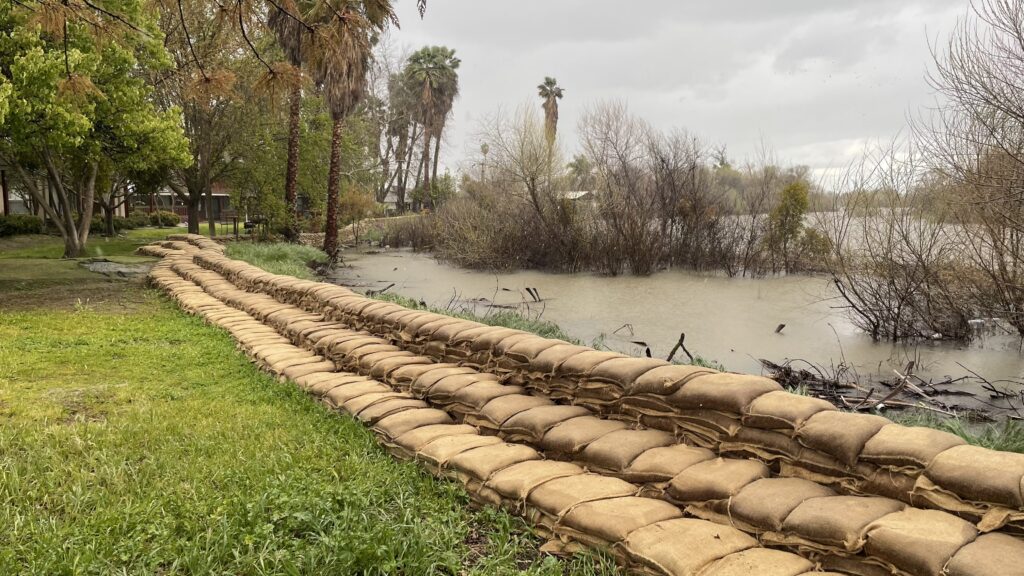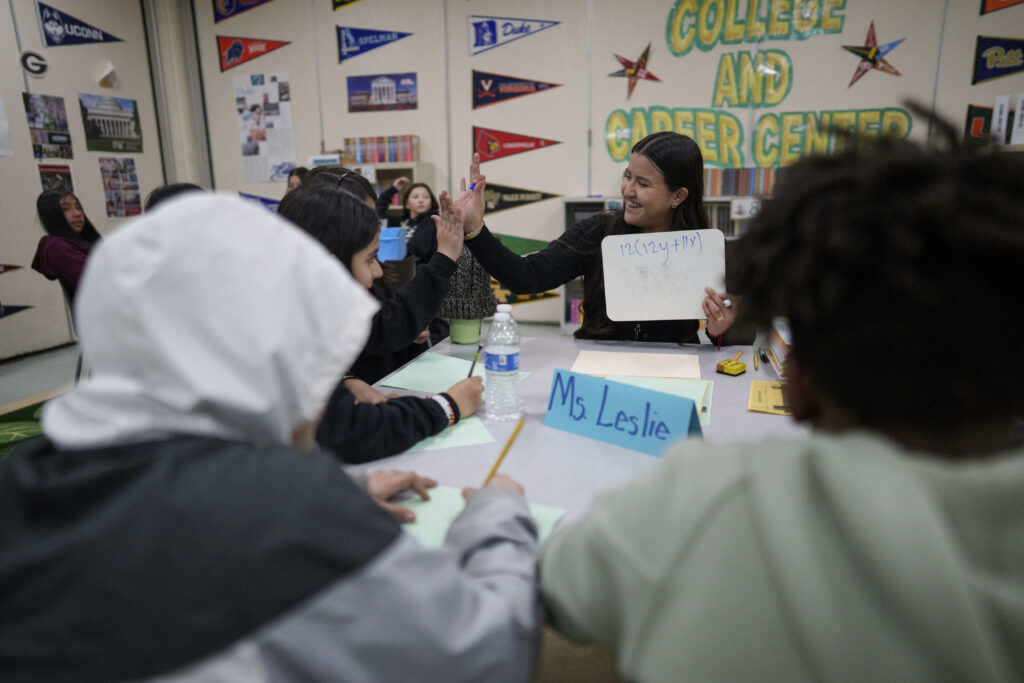
Freestyle Academy in Mountain View, California uses energy-efficient lighting, water-saving fixtures, solar panels, and eco-friendly materials. Native plants are also incorporated into the outdoor environments.
Credit: Tim Maloney, Technical Imagery Studios and Quattrocchi Kwok Architects
Top Takeaways
- Climate disasters already impacting schools will continue to worsen.
- LAUSD is investing in fire-resistant building materials, schoolyard greening projects, and modern heating, ventilation and air conditioning systems.
- California needs a state master plan for climate-resilient schools.
When Los Angeles teachers welcomed students back to school in January, they couldn’t have imagined what lay ahead. Within days, climate-fueled wildfires would tear through Altadena, Pasadena and the Palisades, destroying or damaging twelve schools and disrupting education for more than 600,000 students across the region.
Unfortunately, in the years to come, the climate disasters that are already impacting our schools will worsen. In California, our leaders have the power to chart our own path to healthier, more climate-resilient school buildings — with or without federal support.
The LA fires provide a stark reminder of how unprepared many of California’s schools are for climate change. Beyond lacking fire-resistant building materials that could have mitigated damage, schools also lack necessities: cooling systems for heat waves and air filtration systems for smoke. Lack of cooling is a statewide challenge — between 15% and 20% of California’s K-12 public schools have no functioning air conditioning at all, and another 10% need major repairs to or replacement of their heating, ventilation and air conditioning (HVAC) systems.
But out of this crisis, solutions are emerging. Los Angeles Unified School District (LAUSD), our nation’s second-biggest school district, is turning crisis into opportunity. Instead of simply rebuilding damaged schools, the district is creating a blueprint for climate resilience that should inspire educational leaders across California.
The district is investing in fire-resistant building materials, schoolyard greening projects, and modern HVAC systems to combat increasingly frequent heat waves and filter wildfire smoke and pollutants. While some initiatives were already underway prior to the fires, new investments will be supported by the district’s $9 billion bond that Los Angeles voters approved in November and Proposition 2, the state school infrastructure bond also approved by voters last year. For the first time, the Legislature explicitly allowed districts to use this funding to create safer outdoor learning environments, strengthen vulnerable infrastructure, and advance state energy goals.
LAUSD’s progress is encouraging, but California can’t afford to wait for a district-by-district approach to climate resilience. California needs immediate statewide action to protect all students. Two key steps are essential:
First, we need better state planning and coordination. California currently spends billions annually on school infrastructure, but much of this funding isn’t aligned with climate resilience, indoor air quality, or emissions reduction goals. By allocating $10 million to the California Department of Education to build local capacity and provide regional support through county offices of education, we will build necessary support systems to assist school districts in planning for climate-resilient campuses.
California has already wasted precious time. For two years, we’ve worked with the Legislature on a proposal for a state master plan for climate-resilient schools, only to face Gov. Gavin Newsom’s veto twice over cost concerns, despite strong bipartisan support and a moderate cost of $10 million. This delay puts our children’s safety at risk. This year, we must finally get it done.
Second, districts need comprehensive facilities master plans that address indoor air quality, climate resilience, and cost-effective electrification. Students need a California where every school district is armed with a detailed blueprint for creating climate-resilient facilities, and has the support and funding they need to implement these plans. Implementation guidelines for Proposition 2 are being developed now and should include guidance for school districts to develop these plans with climate readiness at the core. State leaders could also prioritize and leverage Greenhouse Gas Reduction Funds administered by the California Air Resources Board, a program that collects money from the state’s cap-and-trade initiative to invest in projects aimed at reducing greenhouse gas emissions, to support much-needed HVAC upgrades and nudge districts to choose modern electric technologies.
A previous generation of state leaders made sure schools could keep our children safe in an earthquake — it’s time to do the same for the threats posed by extreme heat and weather. No school district should be investing state or local dollars in their facilities without considering current and long-term local climate impacts.
•••
Jonathan Klein is the CEO and co-founder of UndauntedK12, a national nonprofit working to ensure that every student has the opportunity to attend a safe, healthy and resilient school.
Andra Yeghoian is the chief innovation officer of Ten Strands, a San Francisco-based nonprofit whose mission is to build and strengthen the partnerships and strategies that bring environmental literacy to all California’s students.
The opinions expressed in this commentary represent those of the authors. EdSource welcomes commentaries representing diverse points of view. If you would like to submit a commentary, please review our guidelines and contact us.


















